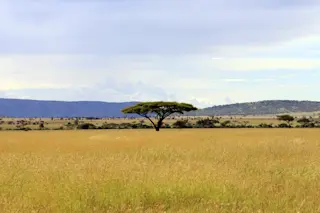Not long ago in Africa, I camped in what seemed like one of the perfect places on Earth, at the edge of a stand of trees overlooking a floodplain. The stars were spangled across the sky in smoky clusters of light, and I lay in my tent listening to the distant rumble of lions and the doleful keening of jackals. In the morning, my companions and I squatted around an open fire and watched the night fade gradually into dawn on the open plain. It might have been 100,000 years ago, when our ancestors were hunter-gatherers. It might have been millions of years ago, when we were apes.
It felt like home, and the biologist I was visiting suggested that perhaps our evolution in a landscape like this had shaped much more than the way our hips articulate or our hands grasp. Maybe evolution influences what we like, he said. ...















